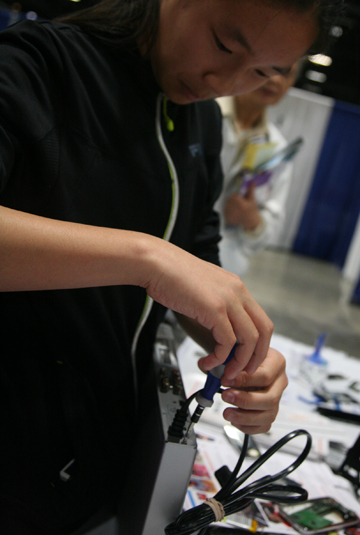 By Karen Field
By Karen Field
Karen Field is Senior Vice President of Content at UBM Electronics.
Over the last 50 years, engineers have made great strides in the development of medical device technology.
Sparked by the first commercially integrated circuits in the 1950s and the promise of ever cheaper computing power, a whole generation of engineers would go on to invent an awe-inspiring list of medical devices: From artificial hearts to MRI and CAT scan machines to advanced linear accelerators that more accurately target radiation therapy for cancer, to name just a few.

These inventions have had a dramatic impact, helping countless people live longer and more productive lives.
But developments in medical technology need to move further, faster. Our health care system in the U.S. today is wobbling: Instead of preventing disease in many cases, we spend billions to treat the symptoms. Far too many people have inadequate access to health care, while many more have none at all.
In places like East Africa, where there is just one doctor for every 50,000 people as compared to one doctor for every 390 people in the U.S., the situation is even more dire. Here, some people have never had their blood pressure taken or weight measured in their lives.
However, the momentum behind providing health care to everyone is growing.
In 2009, I was inspired by a keynote talk given by Khanjan Mehta, a senior research associate in the School of Engineering at Penn State University at NI Week, a worldwide conference for engineers on measurement and automation held by National Instruments. He described an innovative program that is bringing networked health solutions to developing regions like East Africa.
One of the primary engineering goals of the program is to develop low-cost medical devices such as a spirometer and a pulse rate monitor, which can operate under conditions that can be rugged and unforgiving.
The aim is to keep the devices simple - just a sensor, minimal hardware and a cardboard backing - and move the intelligence to the network. Once patient information is collected, it can be uploaded to a server, where a doctor anywhere can read it.
More recently, I was thrilled by the announcement of two new X PRIZE competitions designed to revolutionize healthcare: the Nokia Sensing X CHALLENGE, which aims to achieve affordable, personalized healthcare for all people through the application of sophisticated sensing technologies and devices, and the Qualcomm Tricorder X PRIZE, which challenges participants to develop a portable, wireless handheld device that will monitor and diagnose a person's health conditions.
Given their tradition of technical expertise and proven ability to solve some of the most challenging technical problems, I hope that a new generation of entrepreneurial engineers will seize these opportunities to help make the world a better place.
Visit X PRIZE at xprize.org, follow us on Facebook, Twitter and Google+, and get our Newsletter to stay informed.